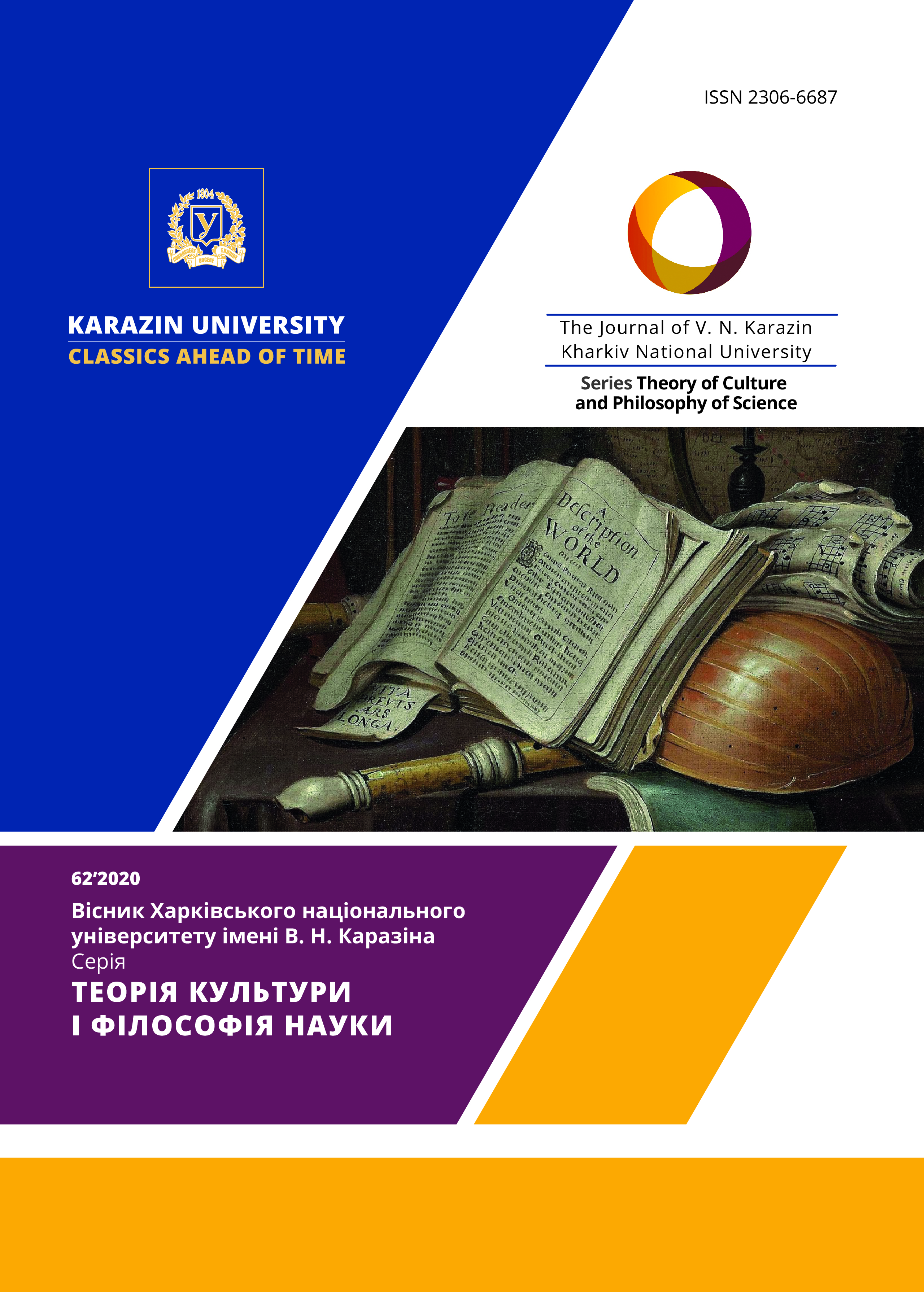МІСЦЕ МЕТАФОРИ В НЕЙРОФІЗІОЛОГІЇ ТА ТЕОРІЇ ШТУЧНОГО ІНТЕЛЕКТУ
Анотація
У статті проаналізована метафора через призму нейрофізіологічного підходу та теорії штучного інтелекту. Також розглянуто найбільш важливі поняття для керування технічним об`єктом: стан, алгоритм та адаптація. Метафора - це невід'ємний елемент творчого процесу, його необхідний іструмент, саме метафоричний елемент у мисленні серед інших сприяє взаємодії логічного мислення з інсайтом. Сприйняття об'єкта значить отримання "доступу" до тих програм, що керують взаємодією з цим об'єктом, тобто через сприйняття, що є ірраціональним, відносним та обмеженим у людини (та обмеженим також у робота), відбувається перехід до раціональної сторони мозку, де приймаються логічні рішення. Метафорою та аналогією, абстрактним оперують у правій півкулі, котра є “породжувачем” творчості. Таким чином, метафора надзвичайно близька до творчості і є одним з механізмів творчої самореалізації. Мозок людини еволюціонував від мозку тварини, котра взаємодіяла з навколишнім середовищем без допомоги мови і у котрої також є півкулі мозку. Якщо розглядати мову як один з елементів удосконалення мозку, то це ставить під загрозу підхід багатьох психологів, котрі вважають, що мова є первинною. Тварина не користується метафорою, коли "спілкується" з іншими тваринами: вона подає сигнали та знаки у своєму "прямому" значенні, людина ж переосмислює одні слова через інші, де духовне переплітається з матеріальним. Вестибулярний апарат, що знаходиться в скроневій кістці, контролює положення тіла в просторі та прискорює його рухи, саме тому мова просторово орієнтована, а отже, метафора також. Цікаво, що рецептори є й у внутнішніх органах, наприклад, ті, що контролюють кровообіг aбо травлення. Існування таких рецепторів може пояснити існування оказіональних метафор, що спираються не на п`ять відомих почуттів.
Ключові слова: метафора, нейрофізіологія, штучний інтелект, мозок.
МЕСТО МЕТАФОРЫ В НЕЙРОФИЗИОЛОГИИ И ТЕОРИИ ИСКУСТВЕННОГО ИНТЕЛЛЕКТА
Аннотация: В статье проанализирована метафора через призму нейрофизиологического подхода и теории искусственного интеллекта. Также рассмотрены наиболее важные понятия для управления техническим объектом: состояние, алгоритм и адаптация. Метафора - это неотъемлемый элемент творческого процесса, его необходимый иструмент, именно метафорический элемент в мышлении среди других способствует взаимодействию логического мышления с инсайтом. Восприятие объекта значит получения "доступа" к тем программам, которые управляют взаимодействием с этим объектом, то есть через восприятие, которое является иррациональным, относительным и ограниченным в человеке (и ограниченным также в роботе), происходит переход к рациональной стороне мозга, где принимаются логические решения. Метафорой и аналогией, абстрактным оперирует правое полушарие, которое порождает творчество. Таким образом, метафора очень близка к творчеству и является одним из механизмов творческой самореализации. Мозг человека эволюционировал из мозга животного, которое взаимодействовало с окружающей средой без помощи языка и у которого также есть полушария мозга. Если рассматривать язык как один из элементов совершенствования мозга, то это ставит под угрозу подход многих психологов, которые считают, что речь первична. Животное не пользуется метафорой, когда "общается" с другими животными: оно подает сигналы и знаки в своем "прямом" смысле, человек же переосмысливает одни слова через другие, где духовное переплетается с материальным. Вестибулярный аппарат, находящийся в височной кости, контролирует положение тела в пространстве и ускоряет его движения, поэтому речь пространственно ориентирована, а следовательно, также и метафора. Интересно, что рецепторы есть и во внутренних органах, например, те, которые контролируют кровообращение или пищеварение. Существование таких рецепторов может объяснить существование окказиональных метафор, опирающихся не только на пять известных чувств.
Завантаження
Посилання
Arbib, M. (2004) Metaphoric brain: Translated from English. / Ed. with a foreword. by D. A. Pospelov. Ed. 2nd, stereotyped. Moscow: Editorial USSR, 2004. 304 p. (Science of the Artificial). (In Russian)
McCulloch, W.S. (1965). Embodiments of Mind, Cambridge, Mass., The MIT Press. (In English)




